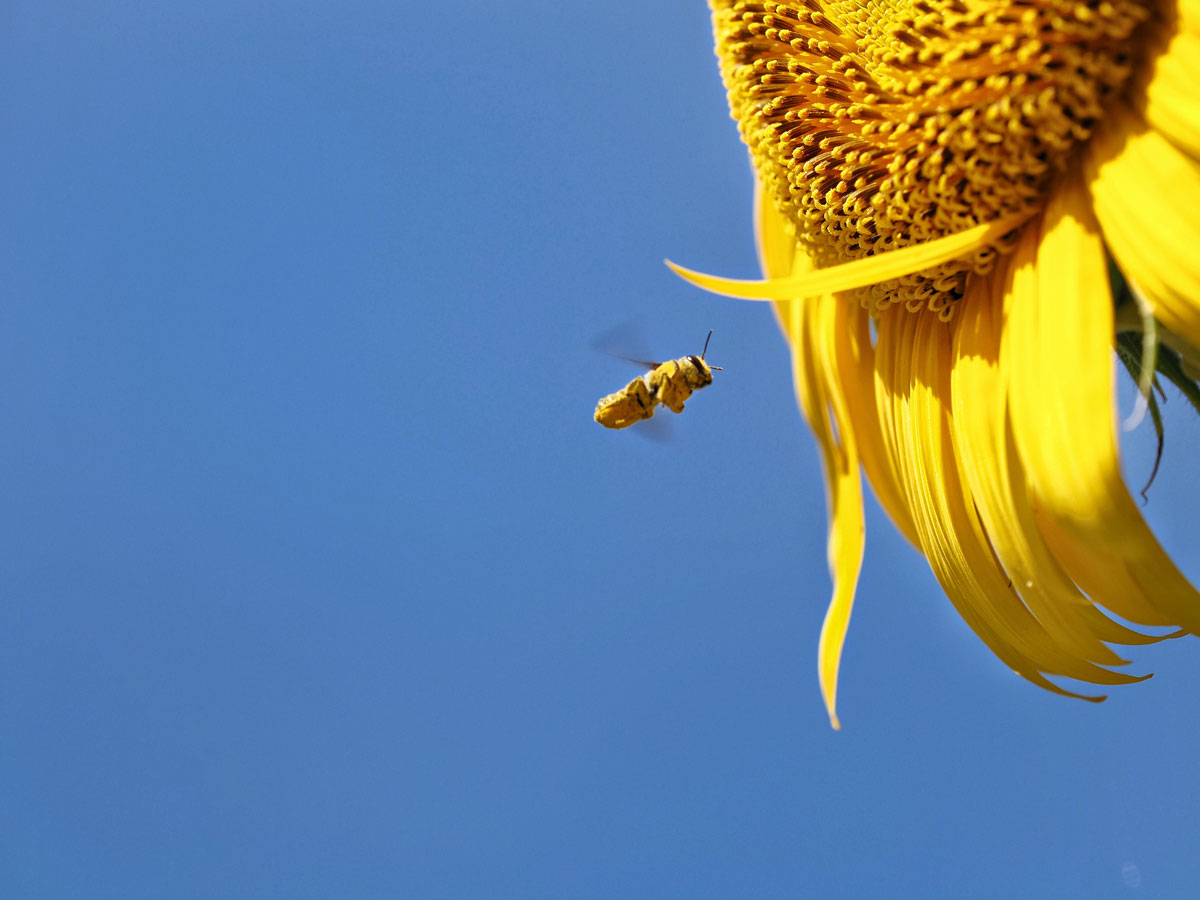IN THE GARDEN: Fall gardening; pollinator buzz; Winter Texans
Fall in Central Texas offers the perfect window to refresh your garden with blooms that thrive in cooler temperatures and shorter days. Marigolds, zinnias, and celosia continue to put on a vibrant show well into October, while hardy favorites like lantana and verbena keep pollinators buzzing through the season. As the nights cool, plant asters and mums to bring rich tones of purple, gold, and rust into your beds and containers.
These resilient bloomers not only add instant color but also help bridge the gap between late summer heat and the onset of winter.
For a longer-lasting autumn display, consider adding perennials and cool-season annuals that will carry your garden into early spring. Pansies, violas, dianthus, and snapdragons can be planted in late October to early November for steady color through winter’s mild stretches. Mexican bush sage and autumn sage provide a burst of texture and movement, especially when paired with ornamental kale and dusty miller. With the right mix, your fall garden in Central Texas can stay lively and colorful long after summer’s blooms fade.
ELECTRIFYING SECRETS

The world of plant-pollinator interactions just got a whole lot more electric—literally. Researchers have discovered that flowers generate electrical signals, which serve as a secret language to communicate with pollinators like bees and butterflies. These signals are produced by changes in electrical potential across the plant’s cell membranes, resulting in a negative charge that can reach up to minus-200 millivolts. This electrical buzz is thought to be a key factor in attracting pollinators and guiding them toward flowers that are ready for pollination.
But how do pollinators tap into this electrical chatter? It turns out that many insects, including bees, possess specialized sensors called electroreceptors that allow them to detect the electrical signals emitted by flowers. When a bee lands on a flower, it can pick up on the electrical charge, which provides valuable information about the flower’s pollen and nectar availability. This electrical cue can even indicate whether the flower has already been pollinated, helping the bee to optimize its foraging efforts. By tuning into these electrical signals, pollinators can make informed decisions about which flowers to visit and when.
The implications of this electrical communication network are profound, challenging our traditional views of plant-pollinator interactions. Rather than simply relying on visual and chemical cues, flowers and pollinators engage in a complex electrical dialogue that facilitates the pollination process. This phenomenon has sparked new areas of research, from exploring the neural mechanisms underlying electroreception in insects to investigating the potential applications of electrical signaling in agricultural and conservation contexts.
As scientists continue to unravel the mysteries of plant-pollinator communication, it’s clear that the natural world still holds many electrifying secrets waiting to be uncovered.
Thank you Willard Horn for the tip!
MAJESTIC EAGLES

Every fall and winter, Central Texas transforms into a temporary home for majestic eagles, particularly bald eagles and golden eagles. These birds migrate to the region in search of abundant food sources, taking advantage of the area’s lakes, reservoirs, and rivers teeming with waterfowl, fish, and small mammals. Texas’ mildish winters also make it an attractive destination, providing eagles with a refuge from harsher climates elsewhere. With plenty of suitable roosting sites, including trees, cliffs, and hills, Central Texas offers an ideal wintering ground.
The region’s man-made lakes, such as Lake Buchanan, Lake LBJ, and Lake Travis, play a significant role in attracting eagles. These lakes provide extensive shoreline and aquatic habitats, making them perfect spots for eagles to hunt and scavenge. The Colorado River, Brazos River, and other waterways also serve as crucial corridors for these birds. Bald eagles typically migrate from Canada and the northern United States, while golden eagles come from western North America, including Montana, Wyoming, and Colorado.
For eagle enthusiasts, Central Texas offers several prime locations for spotting these incredible birds. Lake Buchanan and Inks Lake State Park are popular spots, as well as Enchanted Rock State Natural Area and the Colorado River. However, eagle sightings can vary depending on factors like food availability and weather conditions. To increase your chances of spotting an eagle, look for areas with ample water and surrounding habitat and consider visiting during early morning or late afternoon when eagles are most active.
If you’re eager to catch a glimpse of these majestic birds, consider the following tips:
- Bring binoculars for optimal viewing.
- Keep a safe distance to avoid disturbing the eagles.
- Be patient, as spotting eagles can take time.
ALMOST HALLOWEEN
Gentle reminder: Rotate/turn your pumpkins regularly to ensure even sun exposure and to prevent flat spots.
Till next time. Keep your souls and soles in your garden! Remember the True Master Gardener: Jesus said, “I am the vine; my Father is the Gardener.” John 15:1
“In the Garden” is written by father-daughter gardening team Bill and Martelle Luedecke. If you have any gardening questions, contact Martelle at 512-769-3179 or luedeckephotography@gmail.com or Bill at bill@texasland.net.


